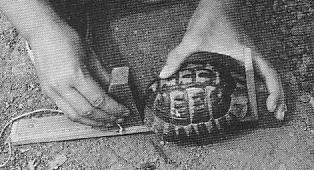There are several possible measures of the straight length of a tortoise (to say nothing of the
curved length, measured over the back). These may differ by up to about 5% for the same
individual in Testudo, and more in species without a nuchal scute such as Geochelone
pardalis. No measure is more correct than the others, and each may be useful in different
circumstances. However, in calculating condition using our length-weight relationships, it is
imporant to measure length in the same way. This is because weight increases approximately with
the cube of length, so a 5% difference in length generates a much larger (about 15%)
difference in predicted mass. A 15% difference in mass is equal to 0.06 condition index units,
so the effect of using a different measure of length may be rather large in relation to the
actual variation of condition among tortoises.

The measure we use is the straight carapace length (SCL), which is the distance from the front
edge of the carapace to the back edge, measured horizontally with the tortoise flat on the
ground. In the field this is easily measured with a "tortometer", based on
the devices used in shoe shops for measuring feet (Stubbs, Hailey, Pulford & Tyler, 1984).
The SCL can be measured at home by placing a tortoise on a flat surface, placing a squared block
of wood etc before and behind the animal, and measuring the distance between.
Other measures of length
The SCL is easily measured in Testudo species, in which the front edge of the
plastron does not project beyond the carapace. (The plastron does project slightly in a few
individuals, when the SCL measured with a tortometer is more properly termed a total length.)
The other common measure is the midline straight carapace length (MSCL), from the front of the
nuchal scute (or groove if absent) to the rear of the carapace. This was originally used for
giant tortoises, which are difficult to move about for measurment, using a calliper.
MSCL is better than SCL for species in which the plastron
projects beyond the carapace, the main disadvantage being the difficulty of measuring
horizontally. Length measured obliquely downwards, from the front to the back of the
carapace, will be greater than the horizontal length, by about 5% in Testudo.
None of these measures is suitable for tortoises such as Kinixys spekii
in which the carapace is hinged and moveable. In such species the curved carapace length (CCL,
always measured along the midline) or midline plastron length (MPL) is the best measure.


